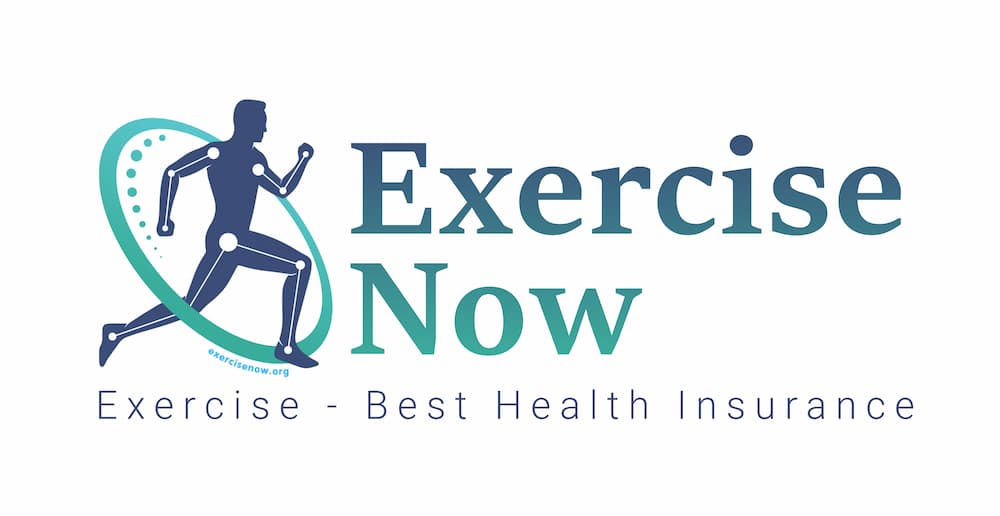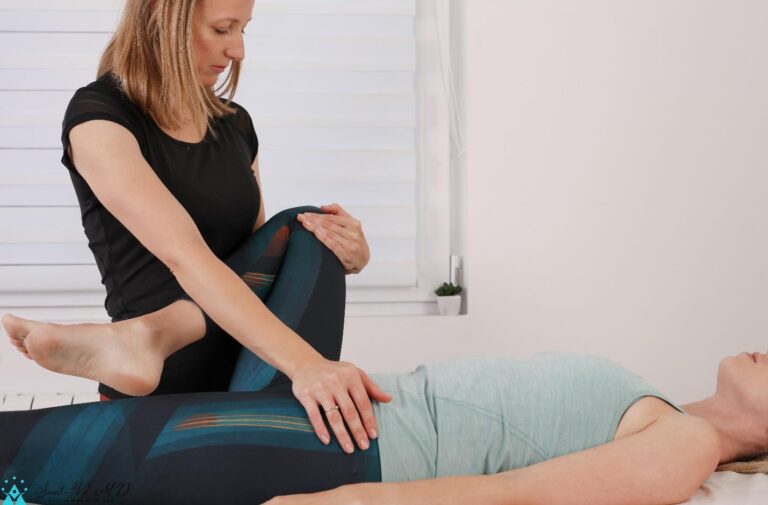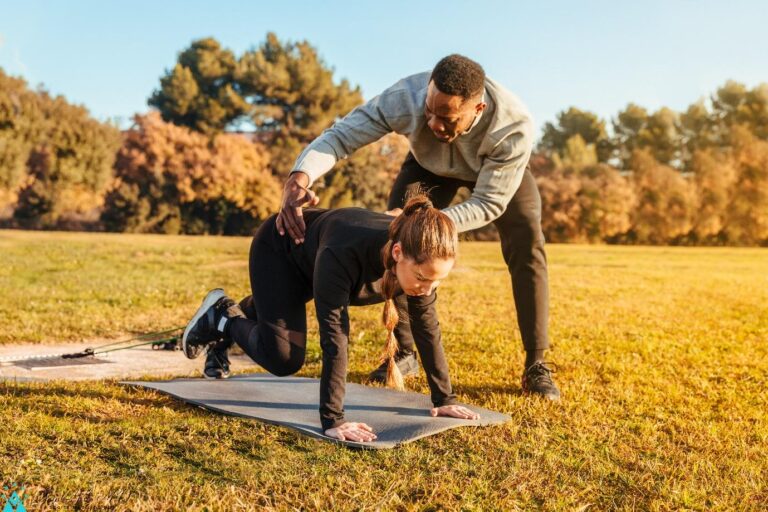
How to start an exercise program
So, you decided to start exercising, that’s great, as wanting is the first and most vital thing.
However, desire is not enough, as it should be supported by adequate motivation and the right kind of planning.
Regretfully, studies show that people can tell more reasons not to exercise than to do it (1). For example, they might say I am too old, overweight, busy, and so on (2). Therefore, to get started, you should have very clear motives. And also to help you stay inspired for long.
The benefits of exercise are innumerable; it is not just about weight loss or getting back in shape.
It is also about preventing metabolic disorders, improved mood, better sexual health, higher immunity, stronger bones, and excellent cardiorespiratory health.
So, here is a six-step plan to stay fit.
1. Set fitness goals and identify reasons to exercise
Lack of fitness goals and reasons to exercise are the biggest demotivators. Studies show that most people never get started as they do not have a firm reason to do so (1). Moreover, starting is one thing, but sticking to regular exercise requires much willpower.
Thus, the first step is to set specific targets or fitness goals, like running 5k in three months or losing 10 kg in a year. To stay motivated, set short-term and long-term goals. Also, ensure that goals are realistic and SMART (specific, measurable, achievable, relevant, and timebound) (3). It is good to have written goals. There could be short-term and long-term objectives, like starting with a 5k and progressing to a 10k run in a year. There could be primary goals and secondary goals, like running 5k could be a primary goal, losing 16 pounds body weight a secondary goal, and so on.

2. Measure your fitness levels
As already said, goals should be measurable; thus, it is essential first to fix the starting point. Some of the things worth measuring and keeping track of are:
Bodyweight
Pulse rate before and after a one mile
Time taken to run a mile
Number of push-ups you can do
Waist circumference
If the goal is building muscles, then measure the circumference of all major muscles like
biceps, chest, thighs
Calculate your BMI
Measure flexibility by bending down and trying to touch your toes
3. Plan for a fitness program
It would help if you have a clear short-term and long-term plan; thus, there must be a clear plan for the next three months and at least some plan for about 12 months. Some of the things to keep in mind when planning is:
a) Type of exercises to focus on- it would depend on your interests and goals. It is vital to choose an exercise form that you can stick to for long enough. Going to the gym does not make sense if you cannot go regularly or are not sure you can go for a whole year. There are many ways to achieve fitness goals, like running, cycling, swimming, dancing, joining aerobics classes, or going to the gym.
b) Make sure your fitness program is balanced- this is one of the vital facts. Firstly regarding the timing, start with at least 150 minutes a week and then gradually progress to 300 minutes a week.
The two most vital components of any exercise program, requiring almost equal focus, are aerobic fitness and strength training (4). Of course, depending on your goals, the amount of stress on each element may vary. For example, if you plan to run 5 or 10 k, the greater focus would be on aerobics, but do not neglect strength training. Else you are not going to make good progress and get enough benefits. Similarly, those looking to improve body shape and build muscles should focus adequately on aerobic or cardiorespiratory fitness. The third element to focus on is flexibility & balance. This component is especially important for older adults. However, it also plays a vital role in muscle building, strength training, and even improving endurance.

c) Make a gradual progress plan – it is good to consult a doctor or a sports medicine physician to design the right kind of fitness and nutrition plan.
d) Plan high-intensity training days, but do not neglect recovery time- sometimes, people are too enthusiastic. Also, remember that training extensively does not always guarantee results, as it also requires adequate rest periods.
e) Make a nutrition plan- it is equally important, as physical training without the right kind of nutrition plan is the work half-done. However, the plan would depend on your goals. For example, if the goal is weight loss, you may need to restrict calorie intake, and in the case of muscle building, a high-protein diet is a must. Additionally, focus adequately on micronutrients and other health supplements. Some supplements can make a considerable difference.
4. Invest in equipment

It will help you train better and help you stay motivated. Thus, invest in training equipment, shoes, and gadgets. Remember that your plan will only work if you make fitness your lifestyle; therefore, you may need to change your style and make significant changes to what you wear even when you are not training.
Needless, to say that these days, fitness trackers are a must. Thus, invest in a decent fitness tracker or watch. It does not need to be expensive, though avoid the cheapest options as they lack accuracy. It may be a good idea to buy some commercial apps, too.

5. Implement your plan – hit the floor
Any plan is useless without implementation. However, keep a few things in mind when getting started, like gradually increasing the physical load. If possible, it may be a good idea to train multiple times a day in shorter sessions, as it may be a better option for some.
Additionally, do not forget to enjoy. Remember that physical training does not have to be
boring. For example, if you are training for a 5k run, you might prefer going on cycling or hiking trips at the weekend with your family.
And, a final piece of advice – be flexible with your plans. When you start training, there will be a need to make some changes to the plan. Sometimes, you may feel too tired, so it would be a good idea to take a break for a day or two.
6. Keep track of your progress
First and foremost, do not do it too frequently. The body needs time to make progress. Generally, it is a good idea to track progress every six weeks or do it on a monthly basis. Of course, a few things need more frequent monitoring. However, monitoring every fitness parameter daily may rather discourage you. It is vital to understand that people do not make progress regularly. There are times of peak, followed by rapid progression if you stick to your plan.

It is always a good idea to revisit your plan and make changes if needed to stay motivated. Additionally, as you progress, you may need to consult specialists to improve the efficacy of your plan; thus, consult a professional trainer, Sports Medicine physicians, and other experts.
References
- Cropley M, Ayers S, Nokes L. People don’t exercise because they can’t think of reasons to exercise: an examination of causal reasoning within the Transtheoretical Model. Psychology, Health & Medicine. 2003;8(4):409-414. doi:10.1080/13548500310001604540
- The Top 10 Excuses for Not Exercising (and Solutions!). The Heart Foundation. Published June 1, Accessed February 19, 2022. https://theheartfoundation.org/2018/06/01/the-top-10-excusesfor-not-exercising-and-solutions/
- McDonald SM, Trost SG. The effects of a goal setting intervention on aerobic fitness in middle
school students. Journal of Teaching in Physical Education. 2015;34(4):576-587. - Schumann M, Feuerbacher JF, Sünkeler M, et al. Compatibility of Concurrent Aerobic and Strength. Training for Skeletal Muscle Size and Function: An Updated Systematic Review and Meta-Analysis. Sports Med. Published online November 10, 2021. doi:10.1007/s40279-021-01587-7















